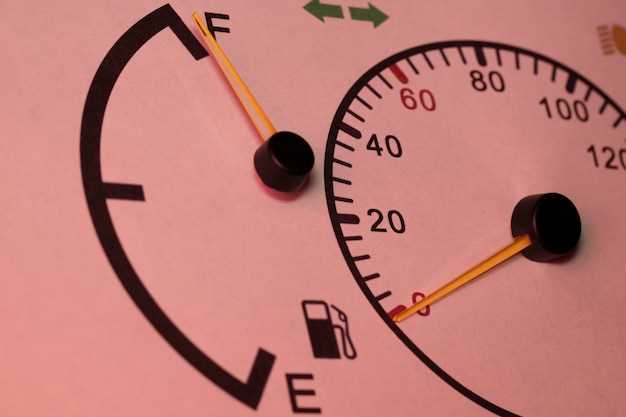
When it comes to maintaining a vehicle, understanding the meaning behind various engine warning lights on the dashboard is crucial. These lights serve as your car’s primary communication tool, alerting you to potential trouble that may need immediate attention. Ignoring these signals can lead to more significant issues, impacting both the performance and safety of your vehicle.
Common engine warning lights can indicate a range of problems, from minor annoyances to serious mechanical issues. Some of the most frequent alerts include the check engine light, oil pressure warning, and battery charge light. Each of these lights has its own set of implications for your engine’s health, helping you diagnose what might be going wrong.
In this article, we will break down the most common engine warning lights you may encounter, providing simple and clear explanations to help you understand the potential trouble your engine is experiencing. By the end, you will be better equipped to decipher these indicators, enabling you to take the necessary steps toward maintaining your vehicle’s efficiency and longevity.
Understanding the Significance of Dashboard Warning Lights

Dashboard warning lights serve as essential communication tools between the vehicle and the driver. These lights indicate various statuses and potential troubles within the engine and other critical systems, providing vital information at a glance.
When you see a warning light illuminated on your dashboard, it signals the need for immediate attention. Each light corresponds to a specific issue, such as low oil pressure, overheating, or battery failure. Ignoring these indicators can lead to more severe engine problems or even complete breakdowns.
The engine warning light, often depicted as an outline of the engine, is particularly crucial. Its activation can denote a range of issues, from minor glitches like a loose gas cap to significant troubles requiring urgent repairs. Regularly monitoring this light and understanding its meaning can help maintain engine health and overall vehicle performance.
Additionally, different dashboard lights may have varying colors and shapes, each conveying a specific level of urgency. For instance, red lights usually indicate immediate danger, while yellow or orange lights may suggest caution and require monitoring. Familiarizing yourself with these signals is vital for responsible vehicle ownership.
In summary, dashboard warning lights are crucial indicators of engine performance and safety. By paying attention to these lights and addressing any troubles promptly, drivers can ensure their vehicle remains in good condition and avoid costly repairs down the line.
Step-by-Step Troubleshooting for Common Engine Alerts
When your engine indicator light illuminates on the dashboard, it’s essential to diagnose the issue promptly to avoid further trouble. Here’s a straightforward guide to troubleshoot common engine alerts.
Step 1: Check for Additional Lights
Before diving deep, observe if other warning lights accompany the engine light. A simultaneous warning could signify a more complex issue, requiring immediate attention.
Step 2: Consult the Owner’s Manual
Your vehicle’s manual often contains specific information relating to warning lights. Look for the section on dashboard indicators to understand the meaning of the engine alert.
Step 3: Perform a Visual Inspection
Open the hood and inspect visible components. Look for damaged hoses, loose connections, or any signs of leaks. Ensure that fluid levels (oil, coolant) are adequate, as low levels can trigger alerts.
Step 4: Use an OBD-II Scanner
Connect an On-Board Diagnostics II (OBD-II) scanner to your car’s diagnostic port, usually located under the dashboard. This tool will help retrieve trouble codes, pinpointing the issue more accurately.
Step 5: Interpret the Codes
Once you have the trouble codes, research what they signify. Many online databases and forums can offer insights into common codes, such as P0300 (random misfire) or P0420 (catalytic converter efficiency).
Step 6: Address the Problem
Depending on the diagnosis, you may need to replace faulty parts, tighten loose connections, or simply reset the warning light after the issue is resolved. If you’re uncertain, consult a professional mechanic for further evaluation.
Step 7: Monitor Performance
After addressing the issue, keep an eye on your vehicle’s performance. If the engine light reappears, further diagnostics may be needed, as underlying problems could be present.
By following these steps, you can effectively troubleshoot common engine alerts and safeguard your vehicle against potential troubles.
When to Seek Professional Help for Engine Warning Indicators

Engine warning lights are your vehicle’s way of communicating potential troubles under the hood. It is crucial to understand when these lights indicate a need for professional intervention. Ignoring the signals can lead to more severe engine problems and costly repairs.
One of the primary indicators for seeking professional help is when a warning light, such as the check engine light, illuminates on your dashboard. This light can signify a variety of issues, from minor problems like a loose gas cap to more severe concerns such as a failing catalytic converter. If the light remains on after you’ve checked for simple issues, it’s time to consult a mechanic.
Another critical moment to seek assistance is when the warning lights are accompanied by unusual sounds, smells, or performance changes. If your engine starts to make strange noises, you notice a drop in power, or experience unusual vibrations, it is essential to have a professional diagnosis. These symptoms could indicate serious trouble that requires immediate attention.
Additionally, if multiple warning lights appear simultaneously, it’s advisable to seek expert assistance. Such occurrences may indicate a systemic problem that could affect the engine’s performance and safety. Consulting with a professional can help identify the underlying issue before it leads to further complications.
Finally, if a warning light turns off and then reappears, this could signify an intermittent issue that may worsen over time. In this case, having a professional assess the situation could prevent a minor trouble from escalating into a major engine failure.




